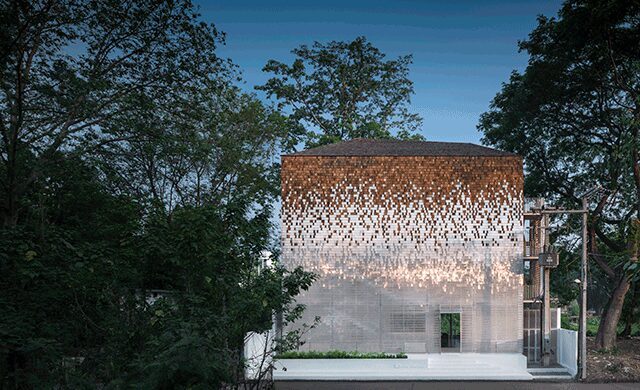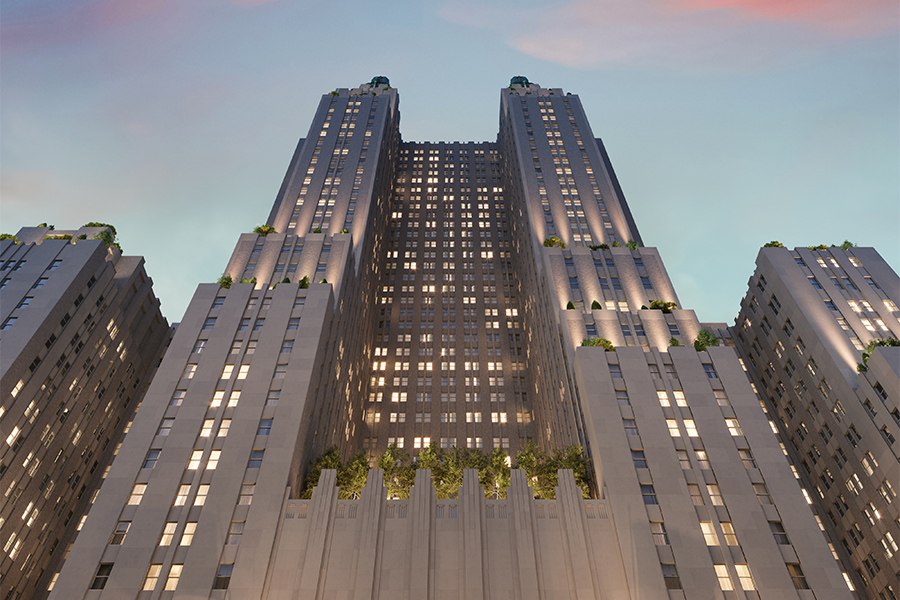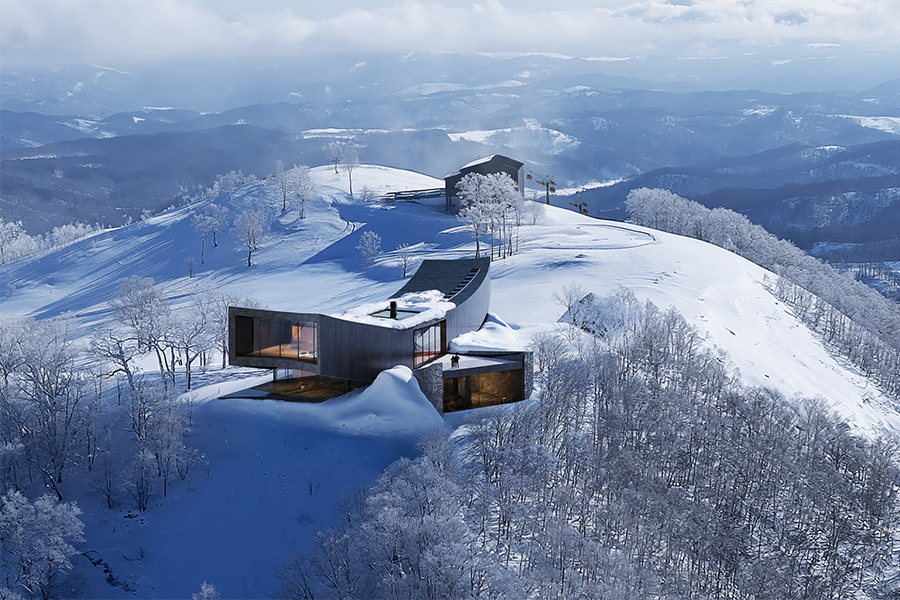
As the former capital of the ancient Lanna Kingdom more than 700 years ago, it’s no secret that Chiang Mai in northern Thailand is overflowing with traditional architecture and brimming with culture. “The old cityscape and its vernacular architecture are characterized by a wood structure with a shingle-pitched roof,” says Amata Luphaiboon, principal of Bangkok firm Department of Architecture Co. This defining, albeit bygone trait, acts as the foundation for Luphaiboon’s latest creation—the wondrous Little Shelter located along the peaceful Ping River.
The translucent fish scale-like façade sets the tone for the rule-bending, transformative design. Comprising polycarbonate and wood shingles that reference the city’s architectural heritage, the exterior “will age gracefully from the brownish wood color into a beautiful silver gray,” says Luphaiboon, ushering it into a glittering future. While the striking exterior shimmers from the sun hitting different touchpoints throughout the day, “at night, with the light from the inside, the building becomes a lantern glowing on the riverbank.”
Inside, the lobby is an exercise in well-executed minimalism. White paint and smooth cement floors create a “stark, gallery-like feeling that accommodates the architectural-scaled hanging installation inspired by the famous Boh Srang umbrella of Chiang Mai,” he says. Hundreds of bamboo umbrellas were carefully hung overhead and are intended to lead the way through the austere lobby and café to the moodier, more intimate restaurant and bar, which is marked by warm wood flooring, circular furniture, and rich gray paint. “The dark surfaces become a foreground for the river view beyond,” Luphaiboon points out, while also creating a dramatic ambiance.
In the simply furnished 14 guestrooms, illusion becomes a sensorial art form as “a place to rediscover Chiang Mai from a new angle,” he says. Custom wallpaper found on the ceiling depicts famous city landmarks, such as the ancient city wall and pine forest, or events like the floating lantern festival, imbuing the rooms with saturated colors as they are “infinitely reflected onto the two long walls clad with small mirrored acrylic shingles.” The effect is “a surreal borderless sensation” he adds. Different in each room, the images are enhanced by metal rods that form geometric frames and create an array of moments ranging from warm tranquility to raw energy to suit guests’ preferences.
Still, beyond the dream-like design, “one of the best attributes of the site is its view,” says Luphaiboon. “Even though the property is located very close to the town center, the surroundings are lush with large trees.” With round daybeds lining the tranquil pool, the outdoor space just off the restaurant is “easy, breezy, and very relaxing,” juxtaposing “the iconic architecture and sophisticated interior spaces [within].”



